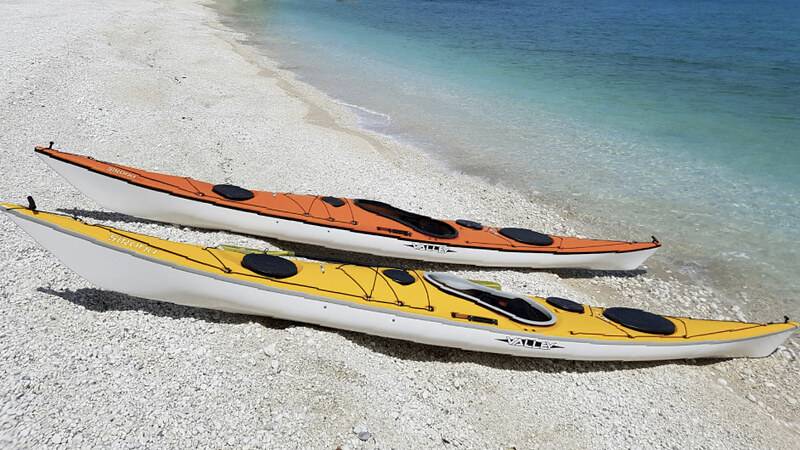Photo by Travel in Kayak
Valley's sea kayaks can be divided into two types, the older 'classic' models with their fish form, wider at the front designs, with moderate V shaped hulls. They only make a couple of these models today. And the contemporary, widest in the middle designs, that mostly have shallow to moderate V shaped hulls and very soft chines. Valley also make almost identical plastic versions of many of their models. This is something that is actually far harder to get right than it may seem and Valley are very good at it. But which one is right for you?
Anas Acuta
Length 523cm (17’2”), Width 51cm (20”)
Average Paddler ≈ 175cm (5’9”), 65kg (145lb)

The Anas Acuta is a boat with a history, in fact all British sea kayaks trace their heritage back to it. It is based on a skin-on-frame boat brought back from Greenland in 1959. It was the first commercially made sea kayak and it is still in production today, all be it with a few modern modifications, namely a keyhole cockpit and hatches. Compared to modern boats it is narrow, which makes it tippy, with hard chines which gives it back some stability, but makes it less forgiving if you don't get your edges right in flow or breaking waves. Overall though it is less stable than most modern boats. The narrowness, combined with the low volume means the boat can't carry as much as its length suggests. Too much weight and the boat starts to go through waves rather than over them, making for a wet ride. It does handle rough water well in the hands of a competent paddler though, and its low profile means it handles well in the wind. A minimalist camper might be able to overnight with it but it is much more suitable as a day boat or what it is particularly in demand for today is as a Greenland rolling boat. It has about as low a back deck as you can get commercially, making it especially suited to for this. Also with its fish form and hard deck chines it is well suited to being paddled with a stick, where as a euro paddle has a slight tendency to clip the front deck at the catch phase of the stroke.
Nordkapp Førti
Length 545cm (17’10”), Width 53cm (21”)
Average Paddler ≈ 185cm (6’0”), 80kg (175lb)

The design route from the Anas Acuta to the Nordkapp was via the Pintail, which was essentially an Anas with soft chines that was then stretched to make the original Nordkapp, a boat that was designed specifically for the 1975 expedition to the most northerly point of Scandinavia. There were several versions of the Nordkapp over the years but the Førti, built for the Fortieth anniversary, is as close as Valley could get to the original. The now classic Valley soft chines are present in the design and combined with a V hull and fairly narrow width it is less stable than most modern sea kayak designs. In the hands of a good kayaker though it is still a fast expedition kayak that can handle rough water.
Gemini SP
Length 452cm (14’10”), Width 56cm (22”)
Average Paddler ≈ 175cm (5’9”), 73kg (160lb)

The Gemini's are a pair of short sea kayaks from Valley. The SP or Sport Play version is slightly wider with an almost flat mid section of hull and much more rocker and bow volume than its twin. This makes it a great rough water, ocean play boat with fantastic manoeuvrability. It turns sharply on an outside edge turn and when on the plane its hard chines carve a nice inside edge turn too. The SP will never have the speed, or at least the efficiency of a longer boat for covering distance and although it does have an oval rear hatch typical of an expedition boat it can't take the weight of anything much more than an overnight trip. It also has a smaller than normal, 6" rather than 8", day hatch cover which makes it harder to pack your kit. It's stability comfortably supports the short to medium height, medium build paddler that typically fits it. The Gemini's do particularly suit short paddlers as the boats reduced length makes it easier for the paddlers shorter levers to manoeuvre the boat. Unlike the rest of the Valley range the Gemini's are manufactured using a vacuum bag technique which minimises excess weight and ensures a consistent quality to the fibreglass. The SP is made using a heavier layup than its twin, to suit the demands of the environment it is designed for.
Gemini ST
Length 452cm (14’10”), Width 54cm (21.25”)
Average Paddler ≈ 170cm (5’7”), 65kg (145lb)

The Gemini ST or Sports Tourer is made using the same vacuum bagged technique as its SP twin, but with a lighter layup. This short and light sea kayak can be very attractive to an inexperienced paddler looking for a boat that is easy to carry and store. However it is designed for an experienced paddler who is able to handle its low initial stability and push it to the speed of a boat a foot or so longer. It achieves this speed, despite the same short length as the SP, by having less rocker, a finer bow profile, less width, softer chines and a more V'ed hull. Despite its speed it still has the manoeuvrability of a short boat, particularly on an outside edge turn, although it requires good balance to perform. Due in part to the low initial stability this boat is suited to a small/medium height and slim build paddler, and to less challenging waters. As with the SP it can manage the load of an overnight trip but not much more. It also doesn't have a day hatch, instead it has a removable deck pod which fits into a recess in the deck. However this can't fit much in it.
Gemini SP RM
Length 452cm (14’10”), Width 56cm (22”)
Average Paddler ≈ 175cm (5’9”), 73kg (160lb)

When you look at the Gemini SP's design features it just makes sense to have an RM or roto-moulded plastic version. It is a great rough water, ocean play boat with fantastic manoeuvrability, which amongst other things makes it great for rock hopping, surfing and tide race play and so is suited to the impact resistant qualities of plastic. The plastic is a triple layer, foam cored construction which is stiff enough to support the flat hull but still light enough for the medium height, medium build paddler to manhandle the boat around. The extra thickness of the plastic construction does slightly reduce the room inside the boat when compared to the composite version but because the boat is fairly wide this doesn't impact on the space in the footwell much. However it does make the boat less suitable for fitting camping kit in but the large day hatch is great for having most of your day trip kit in and keeping the weight central whilst doing so.
Sirona
Sirona 15-10
Length 483cm (15’10”), Width 53cm (20.75”)
Average Paddler ≈ 170cm (5’7”), 60kg (132lb)
Sirona 16-1
Length 490cm (16’1”), Width 56cm (22”)
Average Paddler ≈ 185cm (6’0”), 80kg (175lb)
Sirona 16-4
Length 498cm (16’4”), Width 58cm (22.75”)
Average Paddler ≈ 200cm (6’6”), 100kg (220lb)

Designed as an almost 'do it all' boat the Sirona's do almost all of it well. At around the 16 foot length with a gentle rocker along the length of their hull they are manoeuvrable enough to work well as an ocean play boat, but with sufficient speed and storage space to manage an overnight trip. Their only real limitation is as an extended expedition boat. With Valleys characteristic very soft chines it doesn't have quite as much initial stability as its width dimensions would suggest however these same soft chines make it forgiving in flow and breaking waves, and because of its width, its stability on edge is great and this only adds to its manoeuvrability. They do weathercock quite readily but this can be corrected by trim once you Understand the Physics of Sea Kayaking in the Wind. The Sirona comes in three sizes to suit small, medium and large paddlers respectively and Valley has adjusted the length, width, depth and cockpit coaming dimensions accordingly.
Sirona RM
Sirona 15-10 RM
Length 483cm (15’10”), Width 53cm (20.75”)
Average Paddler ≈ 170cm (5’7”), 60kg (132lb)
Sirona 16-1 RM
Length 490cm (16’1”), Width 56cm (22”)
Average Paddler ≈ 185cm (6’0”), 80kg (175lb)

As seen with the Gemini RM, Valley does well at producing plastic models with the same characteristics as the composite versions. With the Sirona they currently have the smaller and medium models, the 15-10 and 16-1 in roto-molded, triple layered, foam core construction. Again the thickness of the plastic does slightly reduce the internal dimensions, meaning it won't take quite as large a shoe size and quite as much kit. However the plastic tends to bounce rather than break and this makes it much more suitable for action in the impact zone and for those that don't want to worry quite so much about their boat.
Etain
Etain 17-1
Length 521cm (17’1”), Width 53.5cm (21”)
Average Paddler ≈ 170cm (5’7”), 60kg (132lb)
Etain 17-5
Length 531cm (17’5”), Width 54cm (21.25”)
Average Paddler ≈ 185cm (6’0”), 80kg (175lb)
Etain 17-7
Length 536cm (17’7”), Width 54.5cm (21.5”)
Average Paddler ≈ 200cm (6’6”), 100kg (220lb)

The Etain is not designed as an pure expedition boat but rather as more versatile one that can also be used as a day boat too. It isn't designed for ocean play but then any boat can play. With its moderate rocker, shallow to moderate V shaped hull and very soft edges it shares many characteristics with the Sirona, and this is no accident. The cockpit dimensions of the smaller, medium and larger Etain exactly match those of the Sirona. As such they make a great partnership as a two boat quiver as their similarities make it easy to swap from one to the other. Or either model can also be a stand alone 'do it all' ish boat. The forward and rear large oval hatched easily swallow gear into the holds and the front deck hatch is a handy for making the essential's accessible, in particular the essential expedition snacks.
Etain RM
Etain 17-5 RM
Length 531cm (17’5”), Width 54cm (21.25”)
Average Paddler ≈ 185cm (6’0”), 80kg (175lb)
Etain 17-7 RM
Length 536cm (17’7”), Width 54.5cm (21.5”)
Average Paddler ≈ 200cm (6’6”), 100kg (220lb)

Valley currently make the Etain RM in the medium and larger models, the 17-5 and 17-7. They are made in a rotomolded, triple layer, foam core construction and the very similar dimensions give them very similar handling characteristics as their composite versions. Again the thickness of the plastic slightly reduces the room inside the boat, impacting slightly on the space for feet and kit. The RM also comes with the removable deck pod which fits into a recess in the deck. However this can't fit much in it.
Explaining the numbers
When it comes to the dimensions of the boat things are fairly clear cut. However when it comes to the dimensions of the paddler things are a lot more ambigious. Rather than giving a range we have given an approximate ideal paddler size. Lots of factors can affect this though, foot size, or rather footwear size being a good example.
When it comes to weight things get even more dificult. Sea kayaks are obviously designed to carry additional weight, particularily expedition models. However paddler weight makes the boat more unstable and it is this that we are primarily looking at when we suggest an average paddler weight. If you are ok with the reduced stability you can significantly increase this number. And like wise if you are looking for increased stability a larger boat will work as long as you are ok with how the boat fits around you.
It almost goes without saying that you will only really know if you try the boat, preferably in wind and waves.

By Philip Clegg
With over two decades of working in the sea kayaking industry, Phil can be found on a daily basis coaching for Sea Kayaking Anglesey. That's when he's not expeditioning, playing or putting kit to the test.



